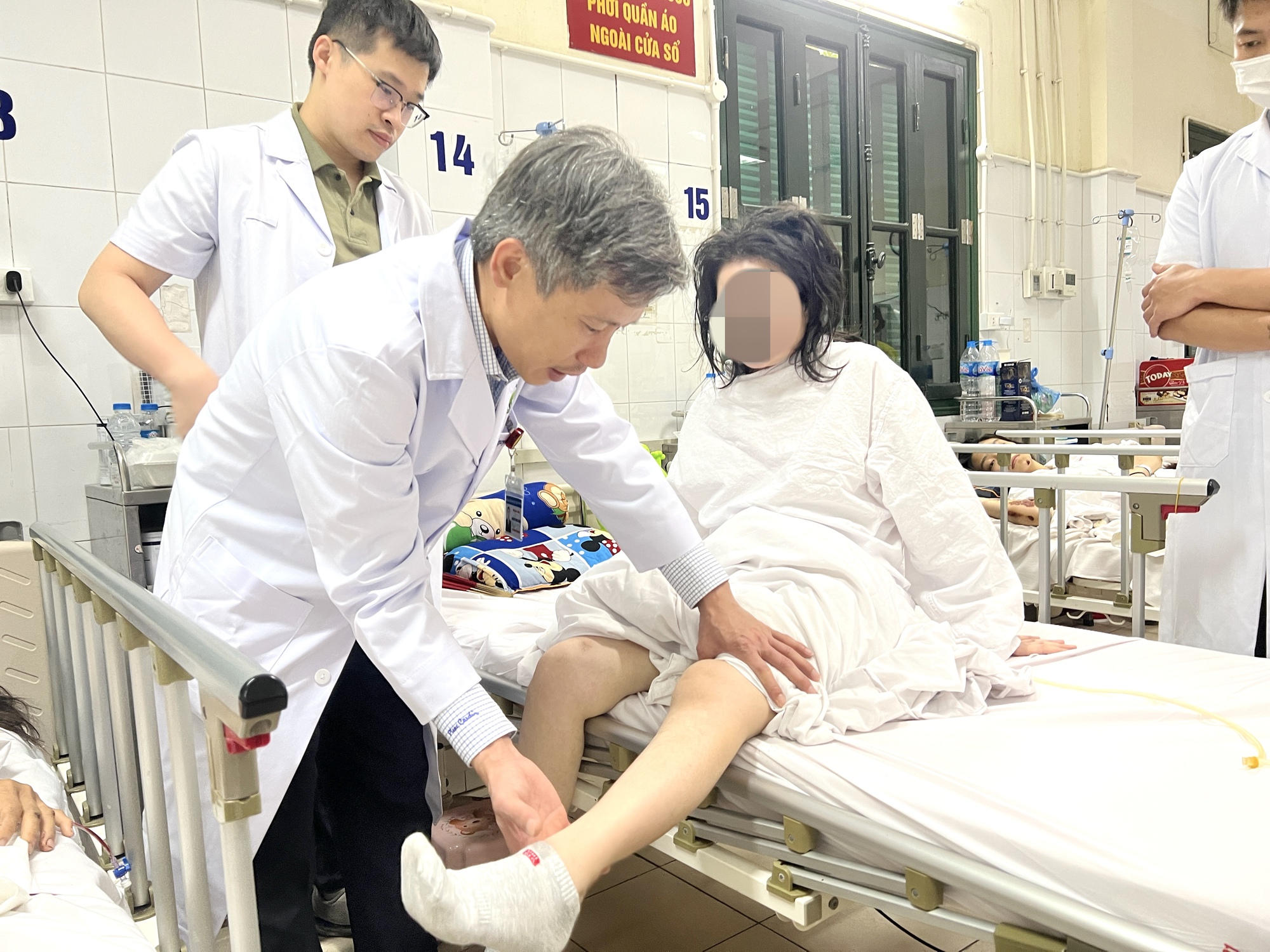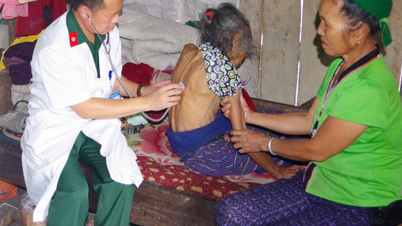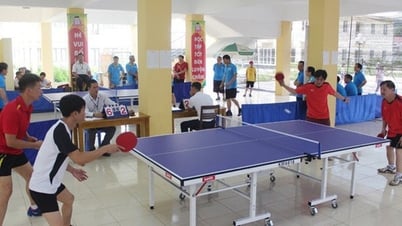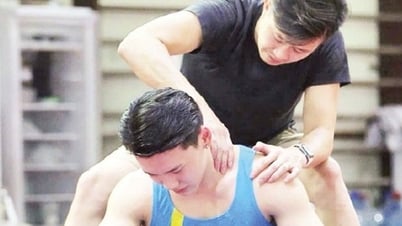Systemic lupus erythematosus is a dangerous autoimmune disease that greatly affects the quality of life. The disease manifests in many organs including joint pain, arthritis, rash, pleurisy or pericarditis, kidney damage or damage to the central nervous system... In particular, arthritis is very common in people with lupus with symptoms of pain, swelling, heat, and limited joint movement.

Associate Professor, Dr. Nguyen Manh Khanh examines a female patient after surgery.
The above patient was diagnosed with systemic lupus erythematosus in 2019 and was treated at a central hospital. However, for about 4 months now, the patient has had pain in both hip joints, limiting movement in both legs. The pain has gradually increased, and the inflammation of both hip joints has made the patient unable to walk or sit in a wheelchair, and has to lie down and move around on a stretcher.
At Viet Duc Friendship Hospital, through clinical examination and careful imaging results, doctors diagnosed the patient with bilateral hip osteoarthritis.
The patient was directly operated on by Associate Professor, Dr. Nguyen Manh Khanh, Deputy Director of the Hospital, to replace both sides of the hip simultaneously with minimally invasive techniques, a very short incision (4-5 cm incision). The surgery applied spinal anesthesia and epidural analgesia, helping to reduce pain, limit the risk of infection and make post-operative care easier. The surgery was successful after 1 hour of surgery. 1 day after surgery, the patient was able to sit up, 2 days after surgery, the patient was able to walk early with the support of crutches/walking frame, and was discharged after 1 week to continue active rehabilitation training.
According to Associate Professor, Dr. Nguyen Manh Khanh, the above case is a difficult one because the patient came to the hospital in a state of near-disability, unable to walk on his own, only lying on a stretcher. For this patient, lupus erythematosus had been progressing for a long time, starting to affect other organs such as: chronic anemia, pericardial effusion, poor bone quality due to osteoporosis, atrophied lower limb muscles, poor muscle strength... Simultaneous bilateral hip replacement surgery helps patients minimize the risks of affecting heart, lung, liver, and kidney function, helps with early mobility, shortens recovery time and hospital stay.
Experts also note that thanks to total hip replacement surgery techniques, many patients have their hip function restored and can return to normal activities. However, to achieve the best results after this surgery, in addition to good surgical techniques, post-operative exercise and rehabilitation are very important. Patients can practice on their own after surgery with the guidance of medical staff.
Source link




![[INFOGRAPHIC] Open-back headphones, look like a... pill](https://vphoto.vietnam.vn/thumb/1200x675/vietnam/resource/IMAGE/2025/7/16/cd63f007ad404018aa504c1009ce19ba)
































































































Comment (0)